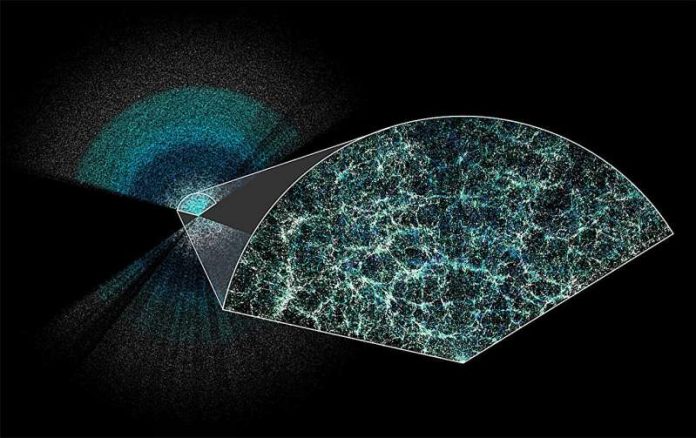
Imagine having the power to look back in time, not just a few years, but billions of years. Researchers have achieved something close to this with the help of 5,000 tiny robots working inside a telescope perched on a mountaintop.
These robots are helping us peer back to a universe that existed 11 billion years ago, using the Dark Energy Spectroscopic Instrument (DESI).
This incredible tool captures light from distant objects, some of which has traveled for billions of years before reaching us, offering a glimpse into the universe’s youth and helping us understand its growth over time.
Understanding the universe’s past is crucial for unraveling the mysteries of its future, including the enigmatic force known as dark energy.
Dark energy is like the unseen hand pushing the universe to expand faster and faster, and figuring out how it has influenced the universe’s expansion over the last 11 billion years is key to unlocking its secrets.
DESI has created the most detailed 3D map of the cosmos ever, offering unprecedented precision in measuring how the universe has expanded over time.
This marks the first time scientists have been able to trace the expansion of the young universe with such accuracy, giving us a clearer picture of its evolution.
The findings from the first year of DESI’s observations have been shared in several academic papers and presentations, sparking excitement in the scientific community.
According to Michael Levi, the DESI project director, the data aligns well with our current understanding of the universe but also hints at potential differences that might suggest dark energy’s influence changes over time.
The DESI instrument, an international collaboration involving over 900 researchers, is based at the Nicholas U. Mayall Telescope in the United States.
It works by capturing light from distant galaxies and quasars, allowing scientists to study the structure of the universe across different periods.
The structure of the universe, as revealed by DESI, shows galaxies clustering along strands separated by vast voids, reflecting patterns established by cosmic phenomena known as baryon acoustic oscillations (BAOs) in the early universe.
These BAOs are essentially ripples in the density of visible matter, caused by the interaction between dark matter and normal matter. By measuring these ripples, researchers can use them as a cosmic ruler to track how the universe has expanded over time.
DESI’s findings have already improved our understanding of several key cosmic parameters, including the Hubble constant, which describes the universe’s current expansion rate, and the mass of neutrinos, one of the universe’s fundamental particles.
As DESI continues its observations, it is expected to refine these measurements further, offering more insights into the nature of dark energy and the universe’s overall dynamics.
The project is a testament to human curiosity and our relentless pursuit of knowledge, allowing us to explore the universe’s past and ponder its future.
Copyright © 2024 Knowridge Science Report. All rights reserved.



